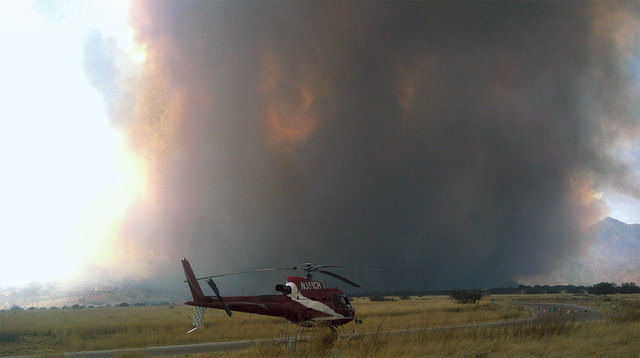Flame Wars: A Year In Firefighting Unlike Any Other
A Year Unlike Any Other


The helicopter used by wildland firefighter Jessica Hall’s team, Sandia Helitack. Behind the chopper, the Monument Fire burns.
Jessica Hall

The Monument Fire in Arizona’s Coronado National Forest
Jessica Hall



